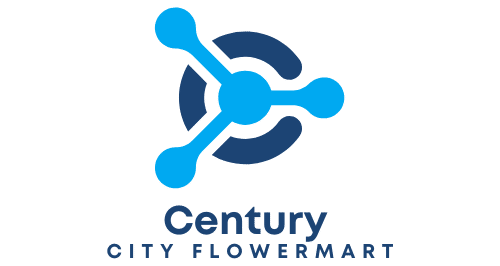What Role Does AI Play in Enhancing Real-Time Public Transit Scheduling?

Transportation is a pivotal element of modern society. It facilitates movement, promotes commerce, and is a key component of urban planning. However, as cities grow, managing public transportation systems tends to become increasingly complex. One of the significant challenges in public transportation is schedule management. With the advent of artificial intelligence (AI), public transit scheduling is being revolutionized. AI offers potential solutions to enhance real-time public transit scheduling, promoting efficiency, safety, and time management.
AI-Powered Public Transit: An Overview
Artificial intelligence, with its capacity to manage vast amounts of data and provide real-time solutions, is slowly being integrated into public transport systems. The use of AI in public transit is not restricted to schedule management alone. It extends to traffic control, vehicle maintenance, and safety systems. However, its application in real-time scheduling has garnered considerable attention given the immediate and evident impact it can have on the efficiency of the transport system.
In parallel : Emerging trends in generative AI for visual creation
AI-based scheduling systems can handle multiple variables simultaneously – such as vehicle availability, route traffic, and passenger demand – and make adjustments in real-time. This capability allows for more efficient use of resources, reduces waiting times for passengers, and generally improves the overall experience of public transit.
Enhancing Efficiency Through AI
Efficiency is the key to a successful transportation system. The primary goal of any public transit agency is to move as many people as possible, as quickly as possible, with the least amount of resources. Traditional logistics and scheduling methods struggle to keep up with the dynamic nature of urban environments. Traffic, road conditions, vehicle availability, and passenger demand are just a few of the factors that can change rapidly and unpredictably.
In parallel : What Are the Latest Advances in Biometric Authentication for Mobile Banking?
AI can process large amounts of data in real-time, enabling it to predict and respond to changes quickly. For instance, if a bus breaks down, the AI system can immediately revise the schedule and route other buses to fill the gap. Similarly, if there is an unexpected surge in passenger demand at a particular stop, the system can divert more vehicles to that location. This ability to adapt on-the-fly can drastically improve the efficiency of public transit.
Ensuring Safety with AI-Based Systems
Safety is paramount in all forms of transportation. Public transit systems must ensure the safety of not just their passengers, but also their employees and the general public. Traditional safety measures often rely on human vigilance and adherence to regulations, which can be fallible.
AI-based systems can significantly enhance safety in public transport. These systems can monitor vehicle health in real-time, predict potential mechanical failures, and schedule proactive maintenance to prevent accidents. Furthermore, AI can also help manage traffic by predicting congestion and suggesting alternative routes, thereby reducing the risk of collisions.
The Role of AI in Traffic Management
Traffic management is a critical concern for public transit systems. Buses and trams often share the road with other vehicles and have to navigate through heavy traffic. Delays due to traffic not only disrupt schedules but also lead to increased operational costs and passenger dissatisfaction.
AI can help alleviate these issues by providing real-time traffic data and predictive analytics. The system can anticipate traffic patterns based on historical data, current conditions, and even special events that might affect traffic. It can then adjust the schedules and routes of the buses accordingly. This proactive approach to traffic management can save a lot of time and resources.
The Future of AI in Public Transit Scheduling
The future of AI in public transit scheduling looks promising. With advancements in machine learning algorithms and data processing capabilities, AI systems are becoming more accurate and efficient. They are not only able to respond to changes in real-time but also anticipate future issues and plan for them.
In the future, we may see AI-powered systems that can manage entire transit networks autonomously. They could optimize routes and schedules in real-time, predict and prevent mechanical issues, and even interact with passengers to provide real-time updates and personalized service.
AI has the potential to revolutionize public transit scheduling, making it more efficient, safe, and customer-friendly. However, realizing this potential would require investment in technology, training, and infrastructure. As we move forward, it would be interesting to see how cities around the world leverage AI to enhance their public transit systems.
The Impact of AI on Passenger Experience and Fuel Consumption
Passenger experience and fuel consumption are two important considerations in any public transportation system. The use of AI in transit scheduling can lead to significant improvements in both these aspects.
Passenger experience is multifaceted and can be influenced by factors such as waiting times, travel times, and the availability of timely and accurate information. AI-based scheduling systems can help improve all of these aspects. By optimizing routes and managing resources in real-time, these systems can reduce waiting and travel times. They can also provide passengers with real-time updates about delays, changes in schedules, or alternate routes, improving the overall passenger experience.
Fuel consumption is a major cost component for public transport agencies. It also has significant environmental implications. AI can help reduce fuel consumption by optimizing routes and schedules. For instance, if the AI system detects that a bus is running half-empty on a particular route, it can temporarily reroute the bus to a busier route. This not only ensures better utilization of resources but also results in lower fuel consumption.
Moreover, predictive maintenance facilitated by AI can help detect issues that might be causing excessive fuel consumption. By addressing these issues proactively, agencies can further reduce fuel consumption and associated costs.
The Potential of Autonomous Vehicles and Machine Learning in Public Transport
The advent of autonomous vehicles and advancements in machine learning have opened up new possibilities in the realm of public transportation.
Autonomous vehicles, guided by AI, can navigate through traffic, adhere to schedules, and respond to changes in real-time. They can also interact with other autonomous vehicles and traffic management systems to ensure smooth and efficient operation. By reducing the need for human drivers, autonomous vehicles can also help public transport agencies save on labor costs.
On the other hand, machine learning, a subset of AI, can help enhance the predictive capabilities of AI systems. Machine learning algorithms can learn from historical data and identify patterns that human planners might miss. For instance, they can predict how passenger demand might change during a particular event or at a certain time of the year. This can help agencies better plan for such scenarios and ensure efficient service.
Conclusion: Embracing the Future of AI in Public Transit
Artificial intelligence is playing an increasingly prominent role in enhancing real-time public transit scheduling. Its ability to manage multiple variables simultaneously, make real-time adjustments, and predict future scenarios make it a potent tool in the transportation industry.
AI is not just improving the efficiency of transportation systems but is also making them safer. It is helping enhance passenger experience, reduce fuel consumption, and pave the way for autonomous vehicles. Machine learning, a subset of AI, is further enhancing these capabilities by enabling systems to learn from past data and predict future scenarios more accurately.
However, leveraging the full potential of AI requires concerted efforts. It requires significant investment in technology and infrastructure, comprehensive training for staff, and robust data protection measures. Additionally, regulatory frameworks need to be updated to accommodate the increasing use of AI and autonomous vehicles in public transportation.
As we move forward, it is clear that embracing AI is not just an option but a necessity for public transport agencies. It is a key driver of efficiency, safety, and customer satisfaction in the ever-evolving transportation landscape. It would be interesting to see how public transit systems around the world continue to innovate and leverage AI to meet the challenges of the future.
